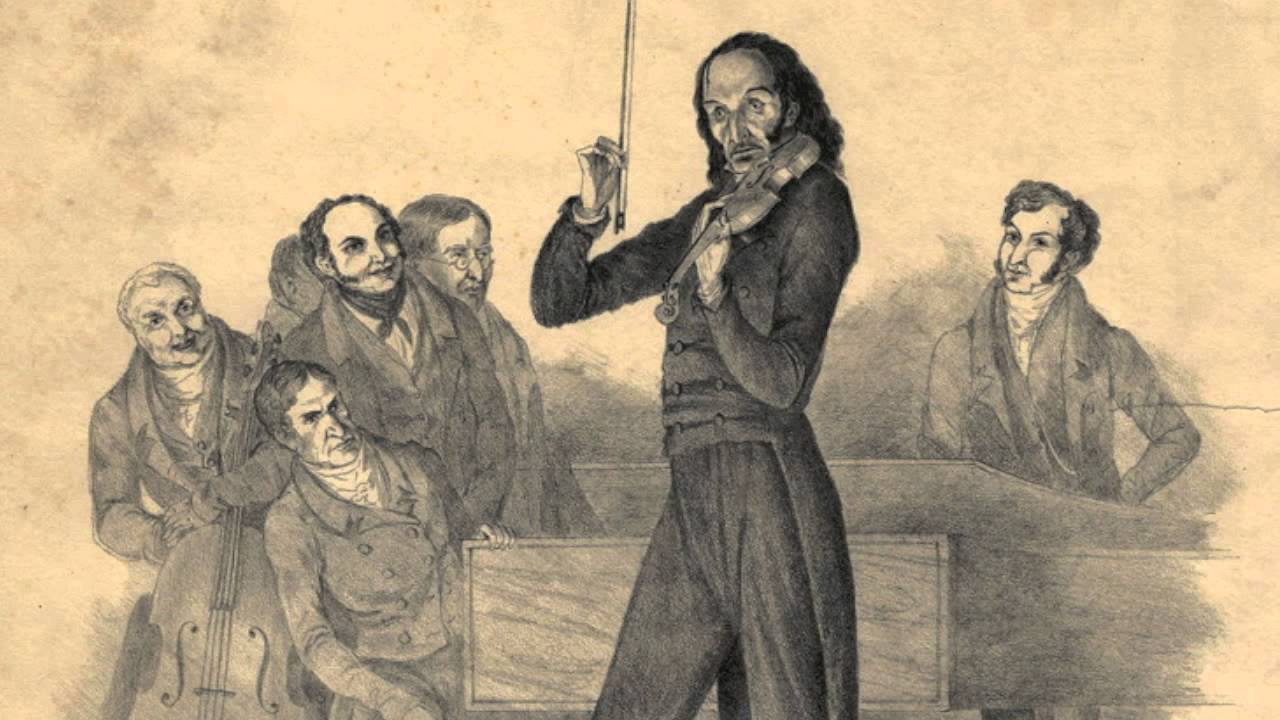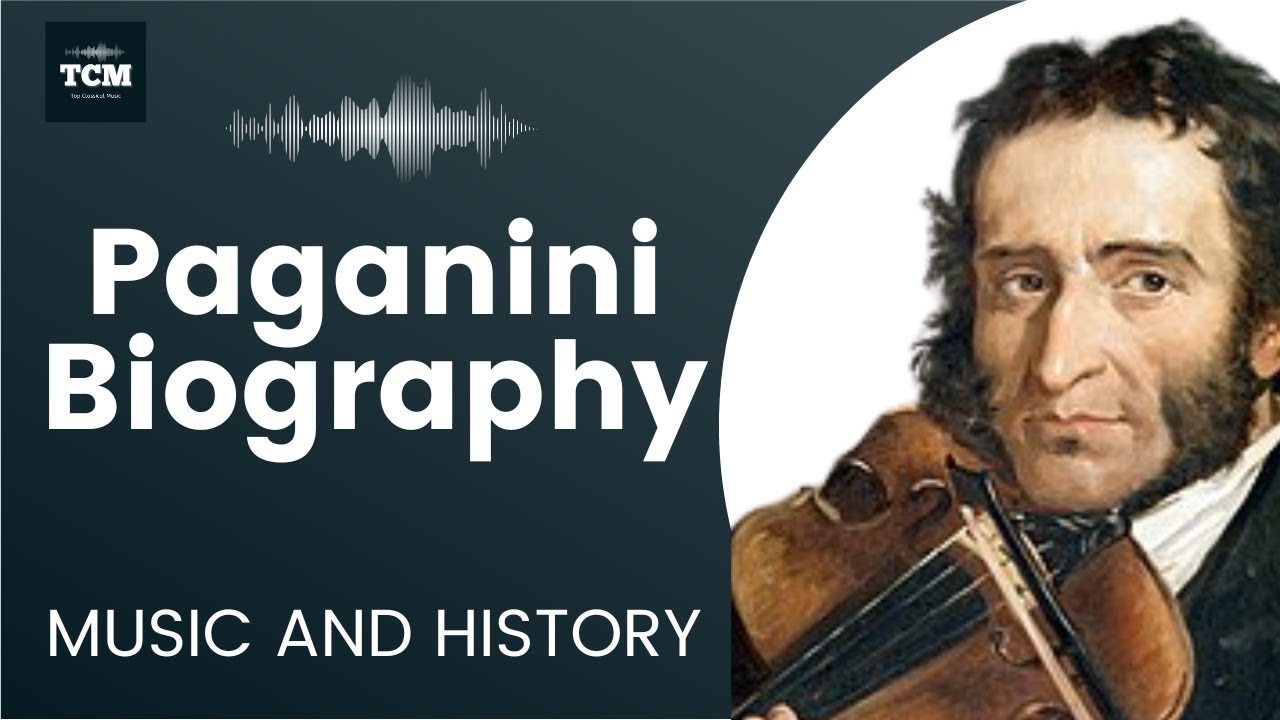Niccolò Paganini, the 19th-century violin virtuoso, left an indelible mark on the world of classical music through his revolutionary compositions and performances. Among his many works, the Violin Concerto No. 2 in B minor, Op. 7, stands out as a masterpiece that combines technical brilliance, lyrical beauty, and theatrical flair. This piece, often referred to as the "La Campanella" Concerto, showcases Paganini's genius as both a composer and a performer.
Niccolò Paganini, the legendary Italian violinist and composer, is renowned for his virtuosic technique and captivating compositions. His works have left an indelible mark on classical music, inspiring countless musicians and enthralling audiences for over two centuries. In this article, we explore the ten best compositions by Paganini that showcase his genius and continue to resonate with listeners today.
Niccolò Paganini, the renowned Italian composer and violin virtuoso, is a figure shrouded in mystique and legend. Known for his exceptional talent and enigmatic personality, Paganini's life is a tapestry woven with fascinating stories and remarkable achievements. Here are ten intriguing facts about this musical maestro:
1 - The Devil's Violinist: Paganini's incredible skill on the violin earned him the nickname "The Devil's Violinist." Legend has it that his extraordinary abilities were so awe-inspiring that people speculated he had made a pact with the devil to achieve his virtuosity.
Nicolò Paganini was one of the most celebrated violinists of his time, and a pioneer of the Romantic era of music. He was born in Genoa, Italy, on October 27, 1782, to a musical family. His father, Antonio, was a mandolin player and taught Nicolò the basics of music. Nicolò soon showed a remarkable talent for the violin and was sent to study with various teachers in Genoa and Parma.
Niccolò Paganini, (born October 27, 1782, Genoa, republic of Genoa [Italy]—died May 27, 1840, Nice, France), Italian composer and principal violin virtuoso of the 19th century. A popular idol, he inspired the Romantic mystique of the virtuoso and revolutionized violin technique.
After initial study with his father, Paganini studied with a local violinist, G. Servetto, and then with the celebrated Giacomo Costa. He made his first appearance in 1793 and then studied with Alessandro Rolla and Gaspare Ghiretti at Parma.
In 1797, accompanied by his father, he toured Lombardy, where with each concert his reputation grew. Gaining his independence soon after, he indulged excessively in gambling and romantic love affairs. At one point he pawned his violin because of gambling debts; a French merchant lent him a Guarneri violin to play a concert and, after hearing him, gave him the instrument.
Between 1801 and 1807 he wrote the 24 Capricci for unaccompanied violin, displaying the novel features of his technique, and the two sets of six sonatas for violin and guitar. He reappeared in Italy as a violinist in 1805 and was appointed director of music at Piombino by Napoleon’s sister, Élisa Bonaparte Baciocchi. He later gave recitals of his own compositions in many towns in Italy and about 1824 formed his long attachment with the singer Antonia Bianchi.
In 1828 Paganini experienced great success in Vienna, and his appearances in Paris and London in 1831 were equally sensational. His tour of England and Scotland in 1832 made him a wealthy man.
In 1833 he settled in Paris, where he commissioned Hector Berlioz to write his symphony Harold en Italie. Paganini thought that the challenge of its viola solo was too slight, however, and he never played it. Following the failure of the Casino Paganini, a gambling house in which he had invested, he went to Marseille in 1839, then to Nice.
Paganini’s romantic personality and adventures created in his own day the legend of a Mephistophelean figure. Stories circulated that he was in league with the devil and that he had been imprisoned for murder; his burial in consecrated ground was delayed for five years.
He was long regarded as a miser, but a more accurate portrait would consider his desire to be free from a train of dependent followers and their importunities for his largesse. His gift of 20,000 francs to the struggling composer Berlioz was an act of generosity seemingly uncharacteristic; possibly Paganini, recognizing in “Beethoven’s successor” a worthy talent, thought it was his duty to come to the composer’s aid.
His violin technique, based on that of his works, principally the Capricci, the violin concertos, and the sets of variations, demanded a wide use of harmonics and pizzicato effects, new methods of fingering and even of tuning. In performance he improvised brilliantly.
He was also a flamboyant showman who used trick effects such as severing one or two violin strings and continuing the piece on the remaining strings. His technical innovations were imitated by later virtuosi, notably Pablo Sarasate and Eugène Ysaÿe.
His other works include 6 violin concertos, of which the first, in D major, is especially popular; 12 sonatas for violin and guitar; and 6 quartets for violin, viola, cello, and guitar. The influence of his virtuosity extended to orchestral as well as to piano music. His influence on Franz Liszt was immense. Themes from the Capricci inspired works by Liszt, Robert Schumann, Johannes Brahms, and Sergey Rachmaninoff.
Paganini Biography
#MusicHistory
#Biography
#Paganini
We are a educational channel specializing in history of classical music.
Our goal is to spread classical music to the greatest number of people.
Explore our channel and listen to more works by Mozart, Chopin, Beethoven, Tchaikovsky, Bach, Haydn, Schumann, Schubert, Vivaldi, Dvorak, Debussy and more! I hope you enjoy it and don't forget to Subscribe. 🎧
🔴 Facebook: https://www.facebook.com/TopClassicalMusic
🔴 WebSite: https://www.melhoresmusicasclassicas.com
Paganini - Violin Concerto No. 2 - Music | History
The Violin Concerto No. 2 in B minor, Op. 7, was composed by Niccolò Paganini in Italy in 1826. In his Second Concerto, Paganini holds back on the demonstration of virtuosity in favor of greater individuality in the melodic style. The third movement of Paganini's Second Concerto owes its nickname "La Campanella" or "La Clochette" to the little bell which Paganini prescribes to presage each recurrence of the rondo theme. The character of the bell is also imitated in the orchestra and in some of the soloist's passages featuring harmonics. The outcome is a very transparent texture, which gains extra charm of gypsy coloration of the rondo theme. This movement has served as the basis of compositions by other composers, such as the Étude S. 140 No. 3 "La campanella" by Liszt, and Strauss I's Walzer à la Paganini Op. 11.
The concerto is in three movements:
1. Allegro maestoso (in B minor, ending in B major)
2. Adagio (in D major)
3. Rondo à la clochette (in B minor)
We are a educational channel specializing in history of classical music.
Our goal is to spread classical music to the greatest number of people.
Explore our channel and listen to more works by Mozart, Chopin, Beethoven, Tchaikovsky, Bach, Haydn, Schumann, Schubert, Vivaldi, Dvorak, Debussy and more! I hope you enjoy it and don't forget to Subscribe. 🎧
🔴 Facebook: https://www.facebook.com/TopClassicalMusic
🔴 WebSite: http://www.melhoresmusicasclassicas.com
#MusicHistory
#ViolinConcerto
#Paganini
Niccolò (27 October 1782 – 27 May 1840) was an Italian violinist, violist, guitarist, and composer. He was the most celebrated violin virtuoso of his time, and left his mark as one of the pillars of modern violin technique. His 24 Caprices for Solo Violin Op. 1 are among the best known of his compositions, and have served as an inspiration for many prominent composers.
Paganini composed his own works to play exclusively in his concerts, all of which profoundly influenced the evolution of violin technique. His 24 Caprices were likely composed in the period between 1805 and 1809, while he was in the service of the Baciocchi court. Also during this period, he composed the majority of the solo pieces, duo-sonatas, trios and quartets for the guitar, either as a solo instrument or with strings. These chamber works may have been inspired by the publication, in Lucca, of the guitar quintets of Boccherini. Many of his variations, including Le Streghe, The Carnival of Venice, and Nel cor più non mi sento, were composed, or at least first performed, before his European concert tour.
Generally speaking, Paganini's compositions were technically imaginative, and the timbre of the instrument was greatly expanded as a result of these works. Sounds of different musical instruments and animals were often imitated. One such composition was titled Il Fandango Spanolo (The Spanish Dance), which featured a series of humorous imitations of farm animals. Even more outrageous was a solo piece Duetto Amoroso, in which the sighs and groans of lovers were intimately depicted on the violin. There survives a manuscript of the Duetto, which has been recorded. The existence of the Fandango is known only through concert posters.
However, his works were criticized for lacking characteristics of true polyphonism, as pointed out by Eugène Ysaÿe. Yehudi Menuhin, on the other hand, suggested that this might have been the result of his reliance on the guitar (in lieu of the piano) as an aid in composition. The orchestral parts for his concertos were often polite, unadventurous, and clearly supportive of the soloist. In this, his style is consistent with that of other Italian composers such as Giovanni Paisiello, Gioachino Rossini and Gaetano Donizetti, who were influenced by the guitar-song milieu of Naples during this period.
Niccolò Paganini
Tracklist:
1. Allegro Maestoso
2. Adagio Espressivo
3. Rondo - Allegro Spiritoso
4. Allegro Maestoso
5. Adagio
6. Rondo à La Clochette
7. Capricho Nº 1
8. Capricho Nº 9
9. Capricho Nº 13
For more:
http://www.melhoresmusicasclassicas.blogspot.com
#MusicHistory
#ClassicalMusic
#Paganini



